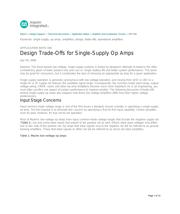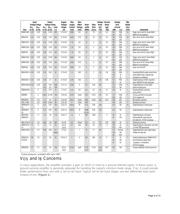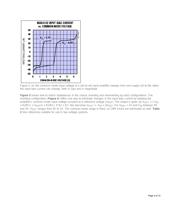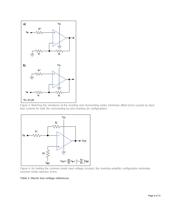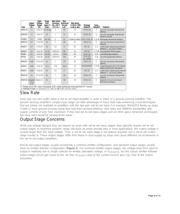下载

Maxim > Design Support > Technical Documents > Application Notes > Amplifier and Comparator Circuits > APP 656
Keywords: single-supply, op amps, amplifiers, design, trade-offs, operational amplifiers
APPLICATION NOTE 656
Design Trade-Offs for Single-Supply Op Amps
Apr 03, 2000
Abstract: The trend toward low-voltage, single-supply systems is fueled by designers' attempts to balance the often
contradictory goals of lower product size and cost vs. longer battery life and better system performance. This trend
may be good for consumers, but it complicates the task of choosing an appropriate op amp for a given application.
Single-supply operation is generally synonymous with low-voltage operation, and moving from ±15V or ±5V to a
single 5V or 3V supply rail reduces the available signal range. Consequently, the common-mode input range, output-
voltage swing, CMRR, noise, and other op-amp limitations become much more important. As in all engineering, you
must often sacrifice one aspect of system performance to improve another. The following discussion of trade-offs
among single-supply op amps also explains how these low-voltage amplifiers differ from their higher voltage
predecessors.
Input Stage Concerns
Input common-mode voltage range is one of the first issues a designer should consider in specifying a single-supply
op amp. The first impulse is to eliminate this concern by specifying a Rail-to-Rail input capability. Certain penalties
must be paid, however, for true rail-to-rail operation.
Most of Maxim's low-voltage op amps have input common-mode voltage ranges that include the negative supply rail
(Table 1), but only some allow inputs that extend to the positive rail as well. Others allow input voltages only within
one or two volts of the positive rail. Op amps that allow signals only to the negative rail will be referred to as ground-
sensing amplifiers. Those that allow signals to either rail will be referred to as rail-to-rail input amplifiers.
Table 1. Maxim low-voltage op amps
Page 1 of 12


